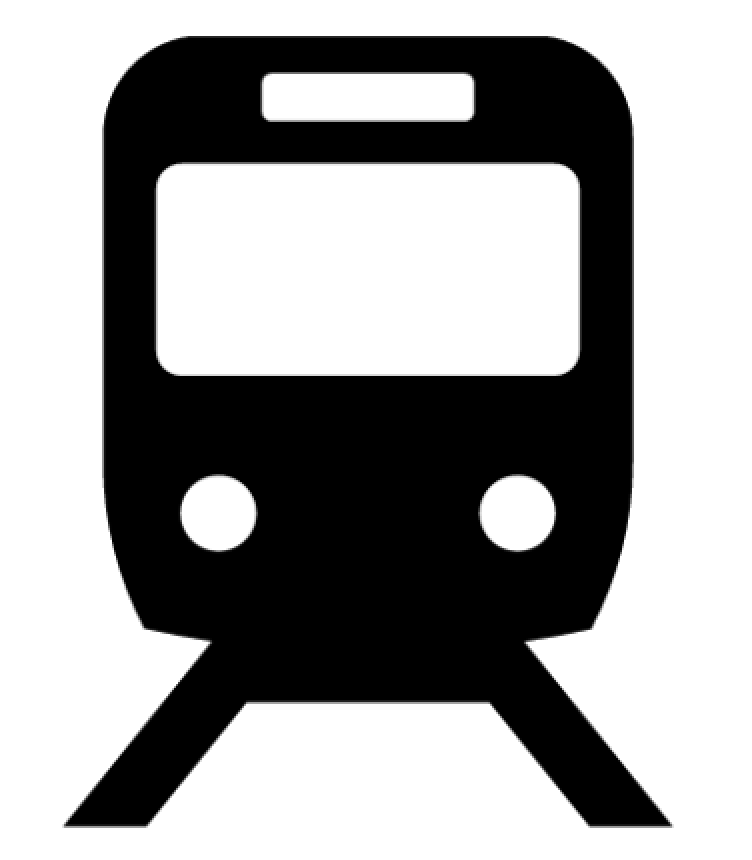|
ChrisB
|
 |
« Reply #420 on: November 03, 2015, 13:32:55 » |
|
Amended to 'Operational Incident' after 0900.
|
|
|
|
|
 Logged
Logged
|
|
|
|
|
JayMac
|
 |
« Reply #421 on: November 03, 2015, 13:35:53 » |
|
Would the freight company get clobbered for the delay minutes or would NR» have to go after them for it?
All depends who is to blame. A SPAD▸ needn't necessarily be the train operator's fault. |
|
|
|
|
 Logged
Logged
|
"Good news for regular users of Euston Station in London! One day they will die. Then they won't have to go to Euston Station ever again." - David Mitchell
|
|
|
|
IndustryInsider
|
 |
« Reply #422 on: November 03, 2015, 14:59:04 » |
|
Passed by signal by approximately 60 metres so well within the safety overlap, but as it is a signal that protects a junction it would have been treated quite seriously.
|
|
|
|
|
 Logged
Logged
|
To view my GWML▸ Electrification cab video 'before and after' video comparison, as well as other videos of the new layout at Reading and 'before and after' comparisons of the Cotswold Line Redoubling scheme, see: http://www.dailymotion.com/user/IndustryInsider/ |
|
|
|
BBM
|
 |
« Reply #423 on: November 03, 2015, 16:30:34 » |
|
In my experience, at this time of year Turbos often seem to struggle to accelerate away from TWY▸ on the Up Relief so maybe poor railhead conditions played a part?
|
|
|
|
|
 Logged
Logged
|
|
|
|
|
IndustryInsider
|
 |
« Reply #424 on: November 03, 2015, 18:25:41 » |
|
Yes, it could have done - although it was a pretty calm morning. As usual when a SPAD▸ occurs, a full investigation will take place including analysis of the engine's data recorder, and the driver tested for drugs/alcohol.
|
|
|
|
|
 Logged
Logged
|
To view my GWML▸ Electrification cab video 'before and after' video comparison, as well as other videos of the new layout at Reading and 'before and after' comparisons of the Cotswold Line Redoubling scheme, see: http://www.dailymotion.com/user/IndustryInsider/ |
|
|
|
SandTEngineer
|
 |
« Reply #425 on: November 03, 2015, 19:51:10 » |
|
Yes, it could have done - although it was a pretty calm morning. As usual when a SPAD▸ occurs, a full investigation will take place including analysis of the engine's data recorder, and the driver tested for drugs/alcohol.
.......and the signalling equipment data logger. |
|
|
|
|
 Logged
Logged
|
|
|
|
|
TaplowGreen
|
 |
« Reply #426 on: November 03, 2015, 21:21:37 » |
|
Yes, it could have done - although it was a pretty calm morning. As usual when a SPAD▸ occurs, a full investigation will take place including analysis of the engine's data recorder, and the driver tested for drugs/alcohol.
.......and the signalling equipment data logger. What's the most common cause/reason for a SPAD? |
|
|
|
|
 Logged
Logged
|
|
|
|
|
|
|
IndustryInsider
|
 |
« Reply #428 on: November 03, 2015, 21:54:52 » |
|
What's the most common cause/reason for a SPAD▸ ?
To add to the links from SandTEngineer: I would guess the most common would be signal failures or the signaller deliberately placing the signal to danger, which are (or used to be) known as Category 'B' or 'C' SPAD's as the train could be running under green signals and if one suddenly goes back to red then the driver has no chance to react. Once it is confirmed that the signals are working and the driver is fit to continue (it can be a bit of a shock depending on location) then there is usually no major disruption caused. Category 'A' SPAD's are the most serious and their causes are widespread, ranging from faults with the train brakes, wheelslip (obviously bad this time of the year), and a whole range of human factors such as not controlling the speed of the train, misreading the signal, failure to acknowledge the cautionary aspects before, starting off from a platform where the signal is red, miscommunication with the signaller, driver micro-sleep... I could go on. From memory I think they get put into four different categories - Misread, Read Across (i.e. thinking the green signal on the next line is yours), Read Through (thinking the signal ahead is yours) or Disregard. Though there's a whole range of reasons why one of those four might occur, so, after waffling for a bit I guess I can't really answer your question! |
|
|
|
|
 Logged
Logged
|
To view my GWML▸ Electrification cab video 'before and after' video comparison, as well as other videos of the new layout at Reading and 'before and after' comparisons of the Cotswold Line Redoubling scheme, see: http://www.dailymotion.com/user/IndustryInsider/ |
|
|
|
eightf48544
|
 |
« Reply #429 on: November 03, 2015, 22:10:36 » |
|
II has given the current definitions. Below are some examples.
Some of the most serious crashes, Harrow, Lewisham, Cowden Ladbroke Grove the driver seems to have missed the signal altogether.
Faulty AWS▸ was part of Southall but the driver missed the double yellow and single yellows.
The recent Wotton Basett incident the driver seems to have disabled the AWS.
Confusion of aspects Berhampstead before the war where it wasn't clear to the driver that he was being routed over a crossover and went too fast and derailed.
Colwich confusion over the flashing yellows which applied to the fast to slow crosover signal and not the actual junction signal. Driver thought they applied to the junction signal so expected signal to clear and went too fast to stop when he realised it wasn't going to change.
Read through is interesting I've read there was problem at Rushcombe on I think the Up Relief with drivers reading through thinking the red they could see in the distance was where they had to stop and missing the signal in between. I believe it was cured by changing the angle of sight of the far signal so it wasn't so visable from before the previous signal.
I find the whole philosophy of signalling fasinating. Where do you sight the signal at the exact braking distance but where it might be obscured by a curve, bridge etc. so lessening sighting time or say in front of a bridge and reduce braking distance. Is it acceptable for trains to run under a succesion of double yellows. It was said that in steam days during the rush hour trains on the Up Main from Hampton Court Junction to Waterloo didn't see a green until the platform signal at Waterloo. They ran steadily on single yellows changing to double.
If a signal has a short sighting time do you have a banner repeater? What aspects do you show. With LEDs you now have the green banner if the signal is showing green. Previously depending on the aspect of the previous signal you had to assumme that if the banner was off the next signal imight be showing a double or single yellow so you couldn't accelerate until you saw the main aspect.
|
|
|
|
|
 Logged
Logged
|
|
|
|
|
IndustryInsider
|
 |
« Reply #430 on: November 03, 2015, 22:35:31 » |
|
I find the whole philosophy of signalling fasinating. Where do you sight the signal at the exact braking distance but where it might be obscured by a curve, bridge etc. so lessening sighting time or say in front of a bridge and reduce braking distance.
The layman would not believe the amount of work that goes into sighting a signal to try and give the driver the best view of it. In days gone by they were often just placed at convenient locations but now there's a whole host of factors that are considered. Three state banner repeaters are a recent innovation and help to get round some of the problems at awkward locations. Reading through a signal most commonly happens at night where the perception of depth is generally far less, especially when there's very little other light pollution except for the signals. There is no doubt in my mind that a large part of the fact we've had no passenger train fatalities in nine years is thanks to TPWS▸ which has stopped several SPAD▸ 's from happening and greatly reduced the severity of others. The Wootton Bassett SPAD is a great example of what could potentially happen without TPWS, in that case because it had been deliberately disabled. |
|
|
|
|
 Logged
Logged
|
To view my GWML▸ Electrification cab video 'before and after' video comparison, as well as other videos of the new layout at Reading and 'before and after' comparisons of the Cotswold Line Redoubling scheme, see: http://www.dailymotion.com/user/IndustryInsider/ |
|
|
|
stuving
|
 |
« Reply #431 on: November 03, 2015, 22:45:14 » |
|
There is now a train-cab driver's-view simulator using CGI▸ that can check sightings off-plan - i.e. based on the engineering design, which itself all computer data. I know it was used for Reading (RSAR), though whether it was then or is still experimental I am not sure.
|
|
|
|
« Last Edit: November 04, 2015, 07:58:48 by stuving »
|
 Logged
Logged
|
|
|
|
|
NickB
|
 |
« Reply #432 on: November 04, 2015, 07:25:51 » |
|
Signals at Hayes and Harlington are bust this morning. They have apparently been fixed but are causing congestion and delays.
|
|
|
|
|
 Logged
Logged
|
|
|
|
|
stuving
|
 |
« Reply #433 on: November 04, 2015, 10:04:11 » |
|
There is now a train-cab driver's-view simulator using CGI▸ that can check sightings off-plan - i.e. based on the engineering design, which itself all computer data. I know it was used for Reading (RSAR), though whether it was then or is still experimental I am not sure.
The main reason for wanting this "Desktop Signal Sighting" or "Virtual Sighting" was electrification. That forest of masts and stanchions needs to be checked, every one of them, at the design stage; hence the use of CAE (computer-aided engineering). Giaconda have some pictures here - I'm not sure if their system is the only one, created in effect for NR» , or if there are others. As you can see, it mixes real video with CGI, and can also be used for driver briefing, training, and canvassing feedback. There are other examples on their site, including videos (but without their own URLs to link to). |
|
|
|
« Last Edit: November 04, 2015, 10:16:59 by stuving »
|
 Logged
Logged
|
|
|
|
|
TaplowGreen
|
 |
« Reply #434 on: November 04, 2015, 10:07:00 » |
|
Thanks for all the responses to my "SPAD▸ " question, very interesting.
|
|
|
|
|
 Logged
Logged
|
|
|
|
|





